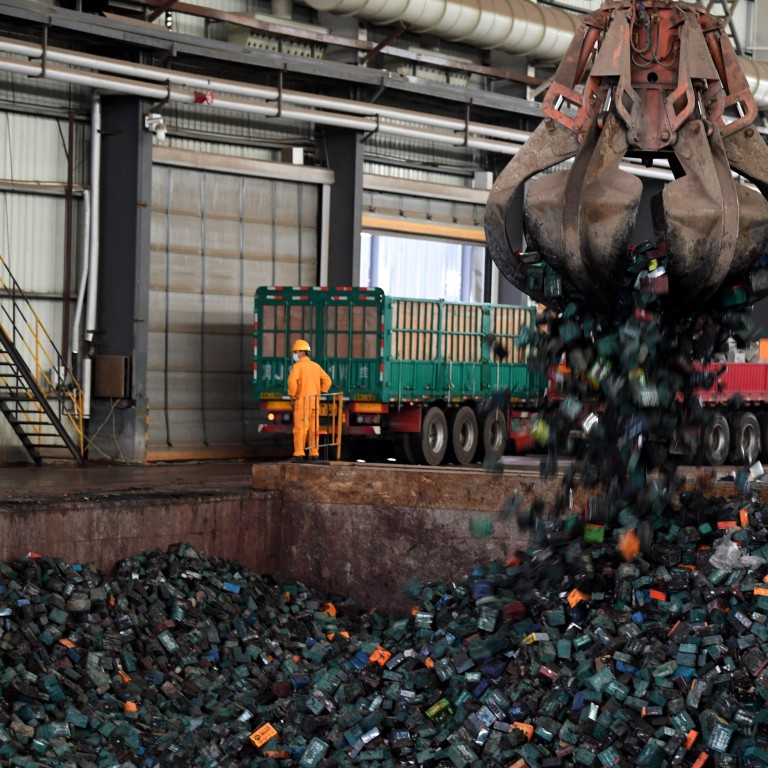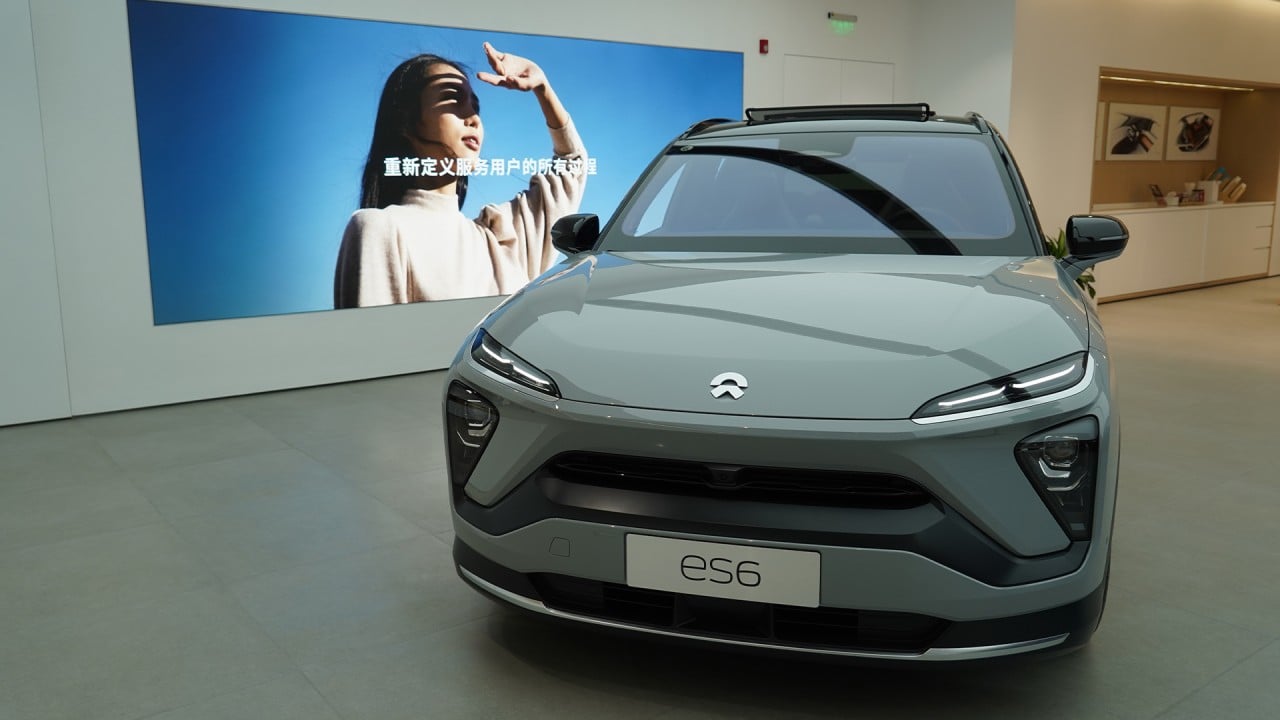
EV battery: China powers Asia in race to ramp up recycling capacity as industry tests new method to overcome pollution problems
- China, home to Tesla’s biggest challengers, accounts for 77 per cent of the EV battery-recycling capacities in Asia
- The dominant pyrometallurgy is likely to be the mainstay metal-recovery method for the next three years before a cleaner hydrometallurgy way takes hold
The region has an annual capacity to process 43.5 gigawatts-hours of spent EV batteries based on existing facilities and those in the pipeline, according to a report published by Fitch Solutions. This compared to 40.9 GWh in Europe and 26.3 GWh in the US.
“We expect China’s battery-recycling capacity to grow exponentially over the next decade to manage the vast number of retired EV batteries,” said Phoebe O’Hara, an autos associate analyst of the firm’s country risk and industry research group.
EV makers like BYD Co, Nio, XPeng and Li Auto are likely to announce their plans over the next year to either build new facilities or expand existing ones, she told the Post separately in an email.
The dominant pyrometallurgy recycling method, which uses high temperature smelting procedures to recover valuable metals such as cobalt and nickel, may persist for the next two to three years, O’Hara said. The environment-friendlier hydrometallurgy method may be deployed after that, she added.
Unlike pyrometallurgy, hydrometallurgy avoids soil and water pollution problems by using an aqueous solution to recover those metals. The new recovery method is still being tested at most recycling facilities, she noted.
The water-based method will become the mainstream process for upcoming facilities, said Bill Ho Kam-piu, co-founder and chief scientific officer of GRST, a Hong Kong-based battery-recycling technology start-up.
Chinese EV makers have formed alliances with battery suppliers and recyclers to secure future supply of key battery materials. Major recyclers including Shenzhen-based GEM and Guangzhou-based Brunp are building up capacities to catch the unprecedented wave recycling demand, he added.
While there is no regulation to ban specific battery recycling processes, the Chinese government through the Ministry of Industry and Information Technology has provided policy support and subsidies to a “white list” of companies.
They would need to meet certain thresholds in operating scale, automation level, energy consumption, emission standards and resource re-utilisation efficiency, said Ho, whose company has a joint venture to build a water-based EV battery manufacturing plant in eastern Zhejiang province. A recycling facility will be added after its production is ramped up.
In North America, O’Hara said mixing hydrometallurgy and pyrometallurgy, a practice adopted by Nevada-based battery recycling start-up Redwood Materials, looks likely to become an industry standard.
In Europe, the latest policy update in January required EV battery makers to recycle their products and the processes they employ must adhere to minimum recycling efficiencies and sustainability benchmarks, including carbon emissions.
Swedish battery developer Northvolt announced earlier this month that it has produced its first lithium-ion battery cell with 100 per cent recycled nickel, manganese and cobalt from battery waste – the first such success for Europe’s recycling industry.
Northvolt plans to build Europe’s largest battery-recycling plant capable of processing 125,000 tonnes annually. It will be sufficient to meet the needs for its goal to make 30 GWh of batteries with 50 per cent recycled materials by 2030.



